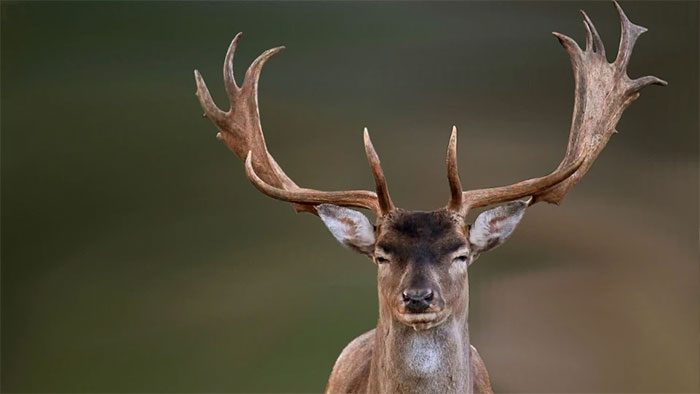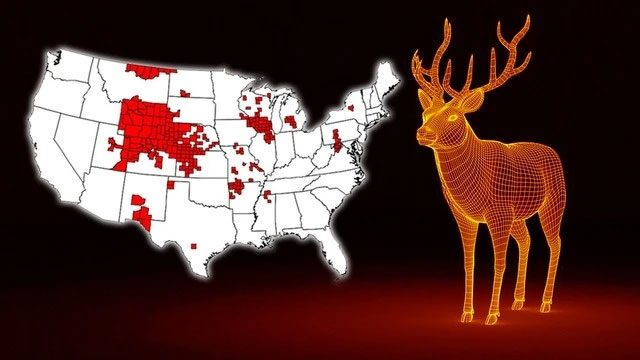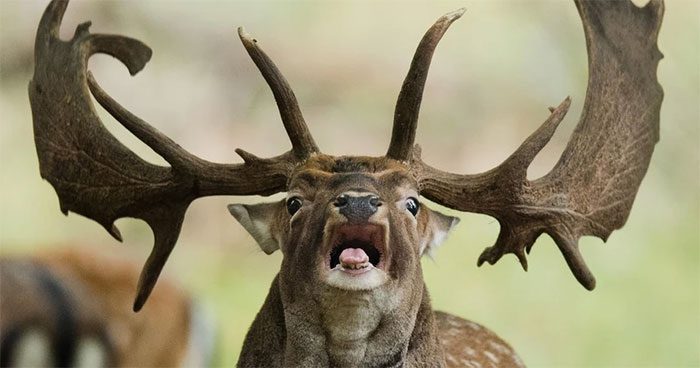A hunter has died after consuming meat from animals infected with Chronic Wasting Disease (CWD), also known as “zombie deer disease.” This has raised concerns among scientists about the potential for the disease to cause a crisis in humans.
According to USA Today, two hunters in the United States who ate venison developed symptoms related to the disease and subsequently died. These individuals had contracted Chronic Wasting Disease (CWD), also referred to as zombie deer disease.

Symptoms of animals infected with zombie deer disease include weight loss, unsteady gait, dull eyes, and excessive drooling. (Image: Pixabay).
Concerns Over Zombie Deer Disease
Researchers at the University of Texas Health Science Center in San Antonio reported that these two hunters died in 2022 after consuming venison from a herd infected with CWD.
Before their deaths, both individuals exhibited symptoms of Creutzfeldt-Jakob Disease (CJD)—a neurological disorder similar to chronic wasting disease.
One of the hunters, a 77-year-old man, quickly developed psychiatric symptoms and became aggressive. Despite receiving treatment, he passed away just one month after being diagnosed.

The highest concentration of infected deer is found in Kansas, Nebraska, Wisconsin, and Wyoming. (Image: WFLA News).
At the annual meeting of the American Academy of Neurology held in early April, scientists reported this case and a similar occurrence in the community, indicating that CWD may be transmissible from animals to humans if humans consume infected meat.
Researchers did not disclose where these individuals lived or hunted. However, according to the CDC, the states with the highest prevalence of infected deer include Kansas, Nebraska, Wisconsin, and Wyoming.
From these cases, researchers emphasize the urgent need for further investigation into the potential risks of consuming venison infected with CWD, as well as the disease’s impact on public health.
Causes of the Disease
According to the CDC, zombie deer disease is a rare neurodegenerative disorder that typically affects species such as deer, elk, and moose.
Notably, CWD is not caused by a virus or bacteria, but rather by prions—abnormal proteins that cause normal proteins in the brain to misfold, leading to brain damage, neurodegeneration, and other issues.
Scientists are concerned about prions because they are highly resilient and can persist for years. They can withstand formaldehyde, radiation, and survive in extreme temperatures.
Prion diseases often progress rapidly and are always fatal, potentially affecting both humans and animals. Creutzfeldt-Jakob Disease (CJD) and variant Creutzfeldt-Jakob Disease (vCJD)—a form of mad cow disease—are examples of prion diseases found in humans.
This also exemplifies how prion diseases can transmit from livestock to humans, leading some researchers to believe that CWD could pose a similar problem.
For instance, in the case of mad cow disease, the U.S. Food and Drug Administration (FDA) states that cattle typically take 4-6 years after infection to show symptoms. In contrast, the incubation period for deer is about 2 years.
Thus, diseased animals may appear normal until they exhibit clear symptoms such as weight loss, unsteady gait, dull eyes, excessive drooling, or even enter a coma.
Mad cow disease in humans—also known as bovine spongiform encephalopathy—often originates from consuming infected beef. This has raised concerns among scientists about the risk of chronic wasting disease transmission from deer to humans.

Deer typically incubate zombie deer disease for about 2 years before showing symptoms. (Image: CBS News).
Is Zombie Deer Disease Transmissible to Humans?
As of now, there have been no recorded cases of direct transmission of zombie deer disease from animals to humans, but concerns have significantly increased since a CWD-infected deer was found dead in Yellowstone National Park in November 2023.
Associate Professor Jennifer Mullinax, a wildlife researcher at the University of Maryland, confirmed that there have been no reported cases of CWD transmission from deer or elk to humans to date.
However, due to the nature of prions, the CDC and other agencies have been taking measures to eliminate these abnormal proteins from the food chain.
Discussing this issue, Dr. Michael Osterholm, director of the Center for Infectious Disease Research at the University of Minnesota, told the BBC that if CWD can directly transmit to humans, it could create a crisis similar to mad cow disease.
However, it’s important to note that the prions that cause mad cow disease and those that cause zombie deer disease differ structurally. Therefore, researchers are still unable to determine whether we can compare the pathology and clinical manifestations of these two diseases.


















































